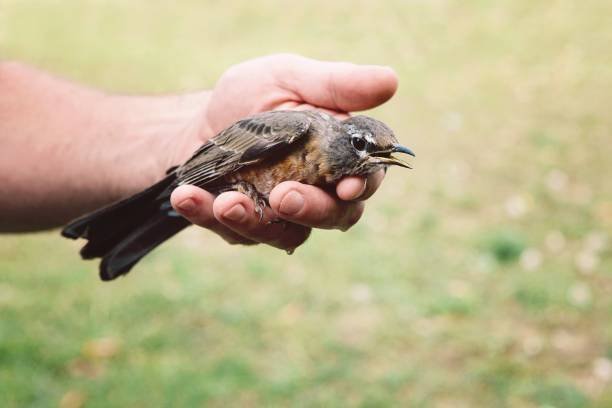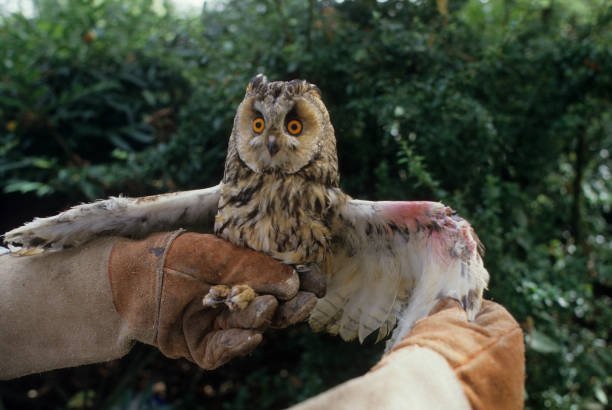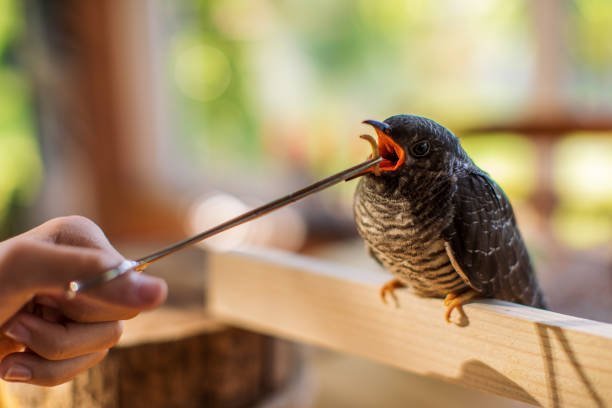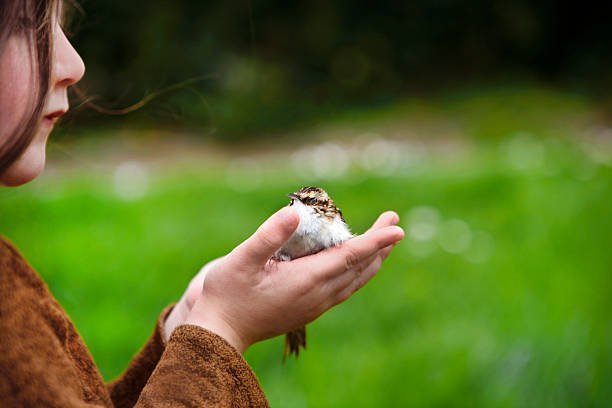Why Do Birds Get Stuck in Urban Areas, and How Can We Assist Them?

Introduction:
In this article, we delve into a compelling and increasingly prevalent concern. As urbanization continues to transform landscapes around the world, our feathered co-inhabitants often find themselves facing unexpected challenges in the concrete jungles we create. Birds, driven by their natural behaviors and instincts, sometimes become disoriented or trapped within urban environments, leading to distressing consequences for both the birds and the urban ecosystems they inhabit.
In this exploration, we aim to uncover the reasons behind birds becoming entrapped in urban settings and, more importantly, discuss effective strategies and interventions to aid them. Understanding these issues is not only crucial for the well-being of our avian friends but also essential in maintaining the delicate balance between urban development and the preservation of biodiversity.
Urbanization and Bird Behavior:
Urbanization drastically alters landscapes, impacting bird behavior. Many bird species have adapted to natural habitats over millennia, and when faced with the sudden and unnatural changes of an urban environment, they can become disoriented. Urban areas often lack the familiar landmarks and cues birds rely on for navigation and foraging. These changes can lead to birds getting “stuck” in urban settings as they struggle to adapt to their new surroundings.
Additionally, urbanization can alter bird migration patterns, with some species being drawn to the artificial lighting of cities. Understanding how urbanization affects bird behavior is crucial in addressing the challenges they face in urban areas.
Light Pollution and Disorientation:
Light pollution is a significant issue for urban birds. Artificial lights can disrupt their natural behaviors, especially during migration. Nocturnal migrants are particularly vulnerable, as they can become disoriented by bright city lights. Birds might circle illuminated buildings or collide with structures, often with fatal consequences. Additionally, light pollution can interfere with their circadian rhythms, affecting breeding and feeding patterns.
Addressing light pollution involves adopting bird-friendly lighting practices, such as reducing the intensity of lighting, using shielded fixtures, and implementing lights-out programs during peak migration periods. Such measures can help minimize the negative impact of artificial lighting on urban birds and reduce the likelihood of them becoming trapped or injured in urban environments.
Collisions with Buildings and Windows:
Bird collisions with buildings and windows are common in urban areas. Birds may mistake reflective glass for the open sky or collide with buildings while navigating through the urban landscape. These collisions often result in injury or death for the birds. The glass on modern buildings, in particular, poses a significant threat to avian safety.
Mitigating bird collisions requires adopting bird-friendly building designs and retrofitting existing structures with features like fritted glass, screens, or decals that make windows more visible to birds. Public awareness campaigns can also educate individuals and businesses about the importance of bird-friendly building practices, reducing the likelihood of collisions and providing assistance to birds that might otherwise become trapped or injured in urban areas.
These efforts aim to create more bird-friendly urban environments and reduce the challenges birds face when navigating through the concrete jungles we build.
Habitat Fragmentation and Loss:
Urbanization often leads to habitat fragmentation and loss, which can trap and displace birds in urban areas. As cities expand, natural habitats are fragmented into smaller, isolated patches. This can disrupt established bird territories and migration routes, forcing birds to navigate through unfamiliar urban landscapes. Habitat loss due to construction and development further limits available resources, making it difficult for birds to find suitable food, shelter, and nesting sites.
To assist birds in such situations, urban planning must prioritize the preservation of green spaces, parks, and corridors that allow for the movement and breeding of avian populations. Creating green rooftops, vertical gardens, and wildlife-friendly landscaping within urban areas can provide essential refuges and food sources for birds. These measures help mitigate the effects of habitat fragmentation and loss and offer urban birds a chance to thrive.
Mitigating Urban Bird Conflicts:
Urban bird conflicts can arise from interactions with humans, such as disputes over nesting sites or scavenging for food scraps. Resolving these conflicts requires a balanced approach that considers both the needs of birds and the concerns of urban residents. Installing birdhouses and nesting boxes in suitable locations can offer alternative nesting sites, reducing the likelihood of human-bird conflicts.
Implementing responsible waste management practices, like securing trash bins to prevent scavenging, helps minimize opportunities for conflict. Educating the public about the ecological importance of birds and the benefits they bring to urban areas, such as pest control and pollination, fosters greater understanding and coexistence. Furthermore, implementing regulations and guidelines that protect nesting sites during breeding seasons can ensure the well-being of both birds and urban residents.
Community Engagement and Solutions:
Engaging the community is integral to assisting birds in urban areas. Collaborative efforts involving local residents, organizations, and government agencies can lead to effective solutions. Community members can participate in bird-friendly initiatives, such as creating bird-friendly gardens, monitoring bird populations, and reporting injured or trapped birds to rescue organizations.
Bird-related educational programs, birdwatching clubs, and citizen science projects can raise awareness about urban bird conservation and encourage active involvement. Communities can also advocate for the implementation of bird-friendly policies at the municipal level, such as dark sky ordinances to reduce light pollution and the establishment of bird-safe building standards. By fostering a sense of shared responsibility for urban bird welfare, communities can play a significant role in creating more hospitable urban environments for birds and ensuring their well-being.
Addressing habitat fragmentation and loss, mitigating urban bird conflicts, and promoting community engagement are essential components of assisting birds in urban areas. These strategies aim to create urban environments where birds can thrive, coexist with human populations, and continue to contribute to the biodiversity and ecological health of our cities.
Conclusion:
I hope this exploration into the challenges faced by birds in urban areas and the strategies to assist them has shed light on the importance of harmonious coexistence between avian life and our expanding urban landscapes. As cities grow and expand, it is incumbent upon us to recognize and address the unique struggles birds encounter when navigating the concrete jungles we create.
Habitat fragmentation and loss, light pollution, and collisions with buildings are all significant challenges that birds confront in urban environments. However, through thoughtful urban planning, responsible lighting practices, and bird-friendly building designs, we can alleviate these challenges and provide birds with safer habitats. Additionally, community engagement and education are pivotal in fostering awareness and collaborative efforts to protect urban avian populations.
By prioritizing the well-being of birds in our cities, we not only ensure the survival of these remarkable creatures but also enrich our urban spaces with their presence and contributions to the ecological balance. Together, we can create urban environments where birds can thrive alongside humans, reminding us of the intricate web of life that binds us all.










Post Comment